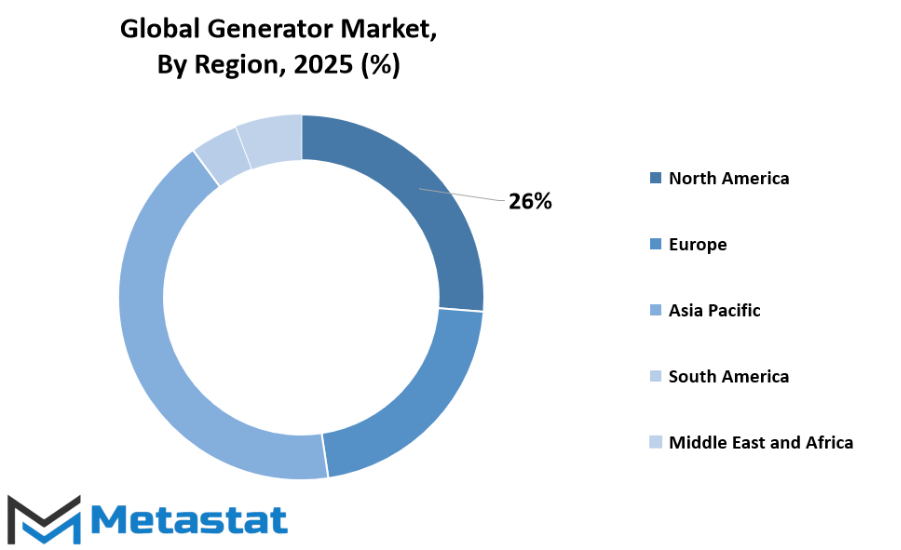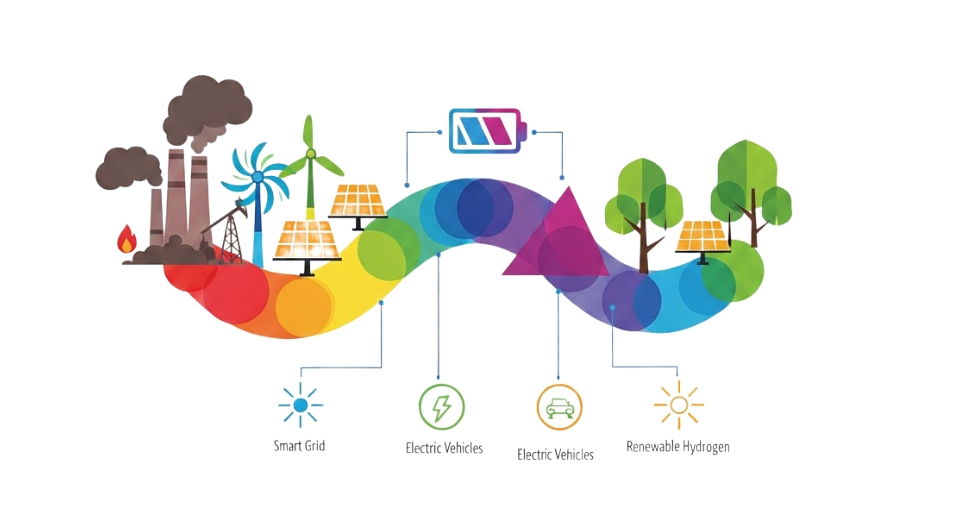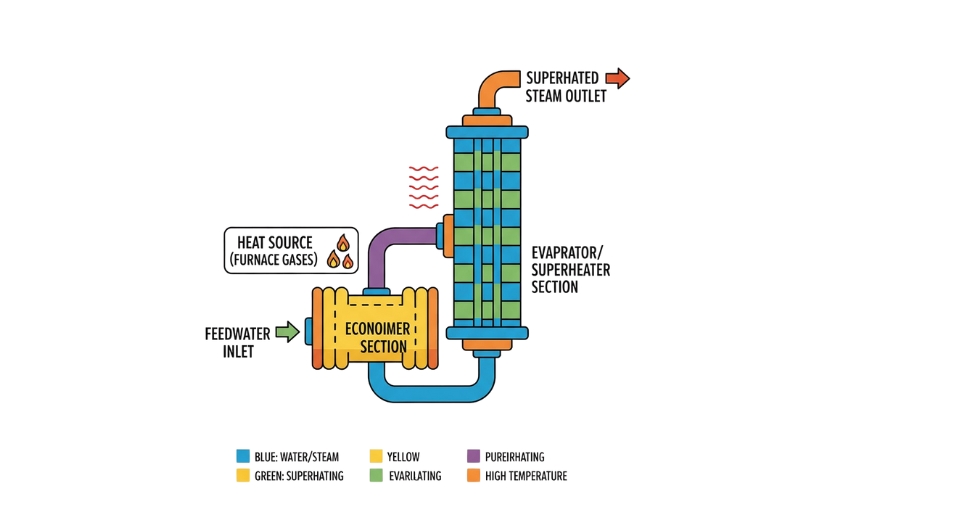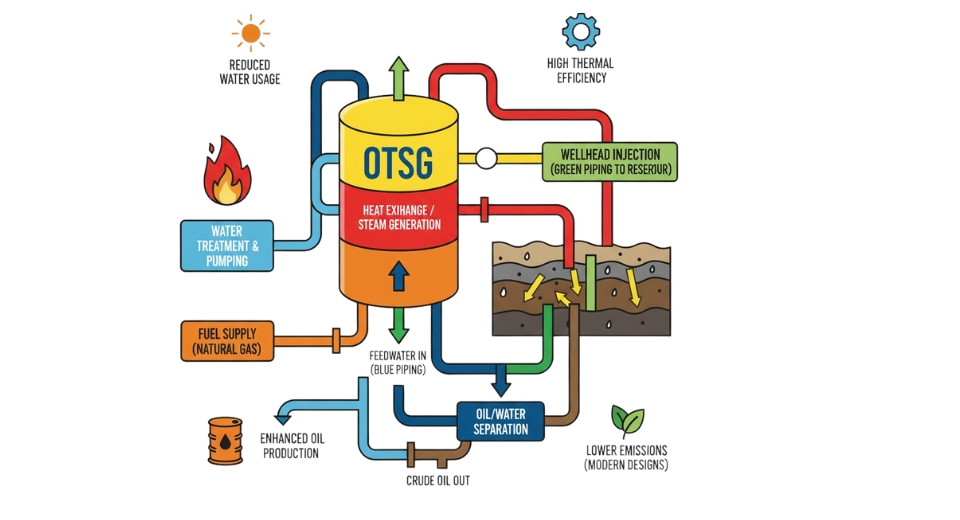MARKET OVERVIEW
The global generator market will remain an important pillar for societies that are striving towards modernization and resilience. Though presently it is already known for its contribution towards providing backup power across residential, commercial, and industrial use, tomorrow its tale will extend much beyond the parameters of what has traditionally been expected. As businesses evolve with quick technological shifts, the generator business will not merely fill urgent power requirements but also reshape the concept of electricity backup and standalone generation in the years to come.
In the years to come, the global generator market will enter an environment where energy dependability will be more significant than ever. Countries will be investing in outages- and crisis-resilient infrastructure, and in the process, generators will have roles that go beyond short-term use. No longer confined to emergency roles, they will become integral players in the design of smarter grids and diversified power systems. They will then find themselves at the confluence of tradition and innovation, reconciling traditional demand with solutions ready for the future.
The industry will also see a shift in how consumers perceive value. Once seen as machinery that remained idle until an outage occurred, future generators will be designed to integrate seamlessly into daily operations. Their presence will not be passive but active, offering more than just backup. They will play an influential role in energy management strategies for both large corporations and households. This shift will compel manufacturers and stakeholders in the global generator market to be innovative in their ideas on performance, sustainability, and flexibility.
Beyond near-term applications, the future will see a focus on how generators will integrate into overarching environmental and technological stories. Questions related to carbon neutrality, hybrid designs, and integration with smart technologies will frame expectations. It will no longer be a question of whether or not generators can supply critical services in time of need, but how they will coexist with renewables, digital monitoring technologies, and sophisticated storage technologies. The global generator market will naturally extend its horizons to territories where flexibility and vision will prevail over short-term gains.
This evolution will not be in isolation. The generator business will increasingly get integrated with industries that have heretofore been standalone. Take, for instance, urban development, disaster resilience, medicine, and information security. Each will look for creative partnerships with generators. By this, the Global Generator industry will be not only meeting need but defining new forms of requirement altogether. The function this time will be to enable resilience across a range of industries and provide flexibility for the unknowns of tomorrow.
In summary, the global generator market will no longer be limited to its traditional role as a backup power option. Rather, it will branch out into new and untapped territories where resilience, innovation, and integration will define its way. Through projection of needs beyond current expectations, the industry will cement its role as a long-term and impactful presence in global energy strategy.
Global generator market is estimated to reach $37,279.22 Million by 2032; growing at a CAGR of 5.5% from 2025 to 2032.

GROWTH FACTORS
The global generator market will only attract more attention as industries and homes put greater emphasis on continuous power supply. In this point in time, where even a couple of minutes of downtime can freeze manufacturing or daily operations, the call for for backup strength answers is extra than ever earlier than. This developing call for cuts throughout production facilities, hospitals, facts centers, and business buildings, such that mills are actually an integral issue of business continuity and protection. The stress to maintain round-the-clock operations has made electricity safety not just a choice however a necessity, encouraging steady adoption of generator structures worldwide.
Urbanization and infrastructure initiatives also play a main function in using this marketplace. As cities grow and new production takes form, the call for dependable power assets will increase along. From metro rail tasks and airports to residential complexes and business parks, electricity backup structures are essential to ensure those initiatives remain jogging smoothly and successfully. As governments and private traders make investments money into massive traits, the demand for turbines will develop even more, cementing their role as a pillar for present day infrastructure.
The marketplace does have challenges with the intention to slow its tempo, although. Steep running and protection fees regularly deter small companies and home users from obtaining turbines. Apart from the initial value, the perpetual outlay for gas and preservation can render them a burden to maximum. Moreover, rules on the surroundings are tightening all over the international, particularly with reference to emissions. Conventional diesel and gasoline-fueled generators come below scrutiny for causing air pollutants, and compliance is seen to necessitate excessive-cease technological upgrades, that may pressure the prices in addition for producers and users.
In spite of these challenges, prospects for growth are evident. The development of hybrid systems based on incorporation of renewable power sources like solar and wind with conventional generators will unlock new opportunities. These technologies decrease dependence on fossil fuels, lower operating expenses, and enable sustainability ambitions, so are of interest to companies and governments alike. Concurrently, emerging market demand in distant regions where grid infrastructure is poor will continue to propel the market. Generators in these areas tend to be the main source of power, providing consistent access to electricity for homes, industries, and community initiatives. Combined, these opportunities imply that the market will be tested but will evolve and grow in forms consistent with changes in technology and energy requirements around the world.
MARKET SEGMENTATION
By Type
The global generator market will keep growing because the need for stable energy resources increases amongst industries and houses. With electricity outages nevertheless widespread in a great deal of the globe, turbines have established to be necessary not simplest for business companies but additionally for home functions. This need for continuous get admission to to power will shape how unique types of mills are being adopted, starting from big-scale solutions to compact, portable devices designed for normal use. The presence of various segments on this market will make certain that a wide style of consumer desires are met, whether for emergency backup, ongoing industrial functions, or cell necessities.
Standby turbines account for a sizeable portion of this marketplace, worth $17,974.44 million, and their usage will continue to grow due to the safety they provide during emergency conditions. Hospitals, facts centers, and organizations that can't bear downtime are greatly depending on standby devices, which mechanically kick in within the event of energy failure. Their capability to offer a clean transition in deliver makes them crucial in areas in which electricity outages occur often. As the era and health care infrastructure keeps expanding, standby turbines will remain a leading category inside the marketplace.
Prime turbines are another essential phase a good way to enjoy excessive demand, mainly in industries like construction, mining, and oil and gas, wherein round-the-clock and heavy-obligation software is required. These mills are designed to function for prolonged hours in harsh conditions, ensuring regular energy supply in which strength infrastructure is constrained or non-existent. Their versatility and resilience will position them as a desirable choice for enterprises that rely on uninterrupted, extended operations. This segment will also be supported by investments in industrial projects in emerging economies, further enhancing its position in the market.
There is also ongoing importance placed on continuous operating power generators by industries where power supply has to never be cut off. Unlike prime or standby units, these are for non-stop applications, meaning production lines and manufacturing plants can remain open without any danger. With industries emphasizing more on efficiency and reliability, this segment shall always remain crucial for industries where even a minute disruption in power may result in massive losses.
Portable generators introduce a new level to the market by serving individual, small business, and outdoor consumers who need space-saving, easy-to-carry solutions. They are mostly employed in home backup during power outages, small-scale operations, or recreational activities such as camping. Their convenience and affordability will ensure their popularity, especially in residential and semi-urban regions. With the provision of affordable power solutions, portable generators will not leave the market restricted to industrial and business sectors but extend to everyday people looking for convenient energy solutions.
By Fuel Types
The global generator market will continue to be at the upward push as communities, companies, and companies depend upon stable power deliver to fulfill their necessities. In maximum areas, electricity outages and unstable grids are still generic, and generators serve as an important backup choice. Aside from crises, they may be hired to sustain seamless operations in locations in which uninterrupted electricity is pivotal, which include hospitals, statistics centers, constructing websites, and factories. This dependence on generators has thus developed a robust demand for various fuel types, each with its benefits and uses, dictating the market's direction.
By fuel type, the market segments into diesel, gas, and others, and each segment will have an important part to play in energy planning in the future. Diesel generators are the most common because of their ability to be long-lasting, efficient, and capable of giving high power output for long durations. They are usually the preferred option in industries and large-scale undertakings where reliability should not be sacrificed. Their tested track record has ensured they remain a preeminent option, particularly in areas where industrialization is fast increasing and where the use of diesel fuel is more convenient.
Gas generators, however, are drawing attention as a greener substitute for diesel. As the world becomes more environmentally conscious, firms and families are more likely to turn to gas-based options. These engines emit less and are usually cheaper in the long term when natural gas is readily accessible. They are also appropriate for cities where the standards for the environment are getting tighter, and businesses are pressed to get greener. More nations will invest in cleaner energy infrastructure, and their popularity will grow even higher.
Other than that, different types of fuels, which include the options including renewable powered turbines, biodiesel, and hybrid variations, are steadily gaining ground inside the global generator market. Even if they do no longer account for almost all proper now, the need for alternatives will widen as technology evolves and efforts towards sustainable power alternatives turn out to be extra intensified. These alternatives aren't yet at the scale of diesel or gasoline turbines, however they'll dictate the route of the marketplace, mainly as innovation brings them within attain and at a decrease cost.
The global generator market will thus remain diversified, led by various demands by industries and residences. Diesel will also continue to reign supreme in heavy-duty uses, gas will increase in significance because of environmental and cost benefits, and alternative fuels will drive opportunities in sustainability-oriented markets. The three fuel types will collectively shape how the market evolves with changing power demands and energy targets globally.
By Power Ratings
The global generator market will remain influenced by the manner in which industries, residential spaces, and commercial buildings meet their requirement for stable backup power. With the increasing reliance of the world on continuous electricity, generators are not considered luxuries anymore but rational choices for energy security. This change of mind is especially evident in regions where power outages are common or where uninterrupted supply is critical to operations. The need for generators indicates both short-term need and long-term readiness, and hence the market plays an important role in sustaining stability across industries.
Segregated further by power ratings, the market is categorized further into distinct segments that cater to specific needs. Those with scores much less than seventy five kVA are typically applied in small offices, families, and establishments where power requirements are modest however important. Their relative affordability and mobility render them appropriate for use on an each day basis, especially in regions in which brief, or emergency strength delivery is the norm. The turbines that fall in the seventy five to 375 kVA capacity deal with medium-sized residences including business institutions, faculties, and hospitals. These turbines strike a stability of capacity with performance, working seamlessly in case of outages without inordinate gas consumption or price of running.
For greater sophisticated electricity necessities of industries, the 375–750 kVA variety provides heavy-responsibility answers which can be constructed to provide non-stop or heavy-duty usage. These are trendy in big-scale manufacturing centers, records centers, and creation web sites wherein downtime creates catastrophic disruptions. Their capacity to boost greater masses places them as crucial assets for industries that cost reliability greater than something else. Above this limit, generators over 750 kVA fulfill the largest power demands, sometimes powering mining ventures, oil and gas developments, and large infrastructure projects. Their size and power supply not only give backup power but also primary supply in areas with poor grid supply.
The range of these power segments illustrates how the global generator market will evolve to meet the diversity of user requirements. From residential applications preventing power outages to multinational corporations providing continuity of operation, every power rating meets a specific use. As the demands for energy increase, the market will show a larger spread in usage, confirming that generators are not just backup devices but integral to sustaining productivity and safety in industries. This evident separation by capacity will advise manufacturers and users alike to make intelligent decisions that embrace efficiency, reliability, and long-term sustainability.
|
Forecast Period |
2025-2032 |
|
Market Size in 2025 |
$25,670.17 million |
|
Market Size by 2032 |
$37,279.22 Million |
|
Growth Rate from 2025 to 2032 |
5.5% |
|
Base Year |
2024 |
|
Regions Covered |
North America, Europe, Asia-Pacific Green, South America, Middle East & Africa |
REGIONAL ANALYSIS
The global generator market is influenced by unique regional dynamics, each being influenced by its own level of industrialization, infrastructural development, and energy demand. In North America, the U.S., Canada, and Mexico offer a mixed scenario. The U.S. will remain dominant in the region with its demand for backup power for residential and industrial use, aided by recurrent weather-related outages and a high level of obsession with emergency readiness. Canada's use of generators across the board will still be bound to its chillier climate and distant energy availability, and Mexico will have an increasing demand underpinned by its booming construction and commercial industries. All of these will enable North America to be an important contributor to the international market.
Europe will offer another critical chapter in the history of the global generator market, with the UK, Germany, France, Italy, and the Rest of Europe each having distinct demand. Germany will maintain a strong emphasis on industrial applications, with the UK and France having demand from both urban and rural requirements, especially in healthcare and critical infrastructure. Italy, which depends on reliable energy for industry and services, will stay in the game. Throughout the larger European market, the drive for clean energy solutions will define the way generators are employed in conjunction with renewable systems to guarantee their status as backup and hybrid options.
Asia-Pacific will be the fastest-growing region of the global generator market, and India, China, Japan, South Korea, and Rest of Asia-Pacific will lead significant growth. India will be an optimal market because of recurring power supply shortages and sheer population size. China, being a technology and manufacturing center, will continue to need high-capacity generator systems to power factories and industrial parks. Japan and South Korea, being highly developed, will prefer high-efficiency generators, especially in disaster relief and high-technology buildings. Other nations in the region will gradually develop demand as development schemes and urbanization expand their requirement for cogent energy supply.
South America's market will be dominated by Brazil and Argentina, backed by the Rest of the region. Brazil's power infrastructure, characterized by excessive dependence on hydropower, will fuel its demand for generators across seasons and in rural areas. Argentina will also rely upon generator systems to sustain both industrial and residential stability. Throughout South America, periodic variations in power supply in certain regions will maintain generators as an essential back-up option.
The Middle East & Africa will continue to be a major contributor to the global generator market, spearheaded by GCC Countries, Egypt, South Africa, and other regional countries. The GCC nations will lead usage owing to their emphasis on infrastructure development and massive developments. Egypt's increasing energy requirements in commercial and residential sectors will drive generator adoption, with South Africa remaining reliant on generators to address sustained issues with reliable power delivery. In the Rest of the Middle East & Africa, increasing industries and populations will assure the position of generators as a reliable support mechanism for everyday life and business functions.

COMPETITIVE PLAYERS
The global generator market will remain a key contributor to the provision of power to modern industries, homes, and infrastructure initiatives. Generators are not merely power backup solutions in the contemporary context; they are rapidly becoming central systems that provide ensured operation in mission-critical settings. With increasing energy needs in both developed and developing countries, this market will move beyond emergency use during outages and become embedded in long-term energy plans. Governments, organizations, and individuals will depend on generators not just as a backup to emergencies but as a source of supplemental unreliable grids and powering remote locations.
A diverse array of firms are dominating the global generator market, contributing in terms of technological advancement, production capacity, and market reach. These include Caterpillar Inc., Cummins Inc., Himoinsa, John Deere, Aggreko, Atlas Copco, and Ingersoll Rand, whose offerings are well known in both industrial and commercial sectors. In addition to them are names like Kirloskar Electric Co. Ltd., Generac Power Systems, Honda Motor Co. Inc., Wärtsilä, DAIHATSU DIESEL MFG. CO., LTD., and Yanmar Holdings Co., Ltd. keep enhancing the industry with their varied product portfolios. Briggs & Stratton, Kohler SDMO, BGG.UK, PRAMAC, FG Wilson, and Wacker Neusen also hold strong influence, especially in those markets where portable as well as mid-range generators are in great demand.
Some of the other significant players include HiPower Systems, New Way, J C Bamford Excavators Ltd., Inmesol, Dagartech, and AKSA Power Generation, all of whom work towards meeting specific market demands, be it compact or industrial level power. International giants like ABB Ltd., Mitsubishi Electric, Mahindra Powerol Limited, Rolls-Royce Power Systems, and Ecoflow are incorporating more depth into the industry, with innovation and international supply being consistent throughout. Each has a distinct strength, from technology and environmental design to low price and mass production.
As new technologies in energy storage, digital monitoring, and fuel efficiency continue to shape the global generator market, these firms will continue to diversify their product lines and conform to more stringent environmental controls. The demand for cleaner, more efficient energy will propel manufacturers to emphasize hybrid systems and renewable-friendly technologies, rendering generators more sustainable without sacrificing reliability. This transition will enable the market to accommodate a broader spectrum of industries and geographies, cementing its relevance in both city and rural settings.
Generator Market Key Segments:
By Type
- Standby Generators
- Prime Generators
- Continuous Operating Power
- Portable Generators
By Fuel Types
- Diesel
- Gas
- Others
By Power Ratings
- Below 75 kVA
- 75-375 kVA
- 375-750 kVA
- Above 750 kVA
Key Global Generator Industry Players
- Caterpillar Inc.
- Cummins Inc.
- Himoinsa
- John Deere
- Aggreko
- Atlas Copco
- Ingersoll Rand
- Kirloskar Electric Co. Ltd.
- Generac Power Systems
- Honda Motor Co. Inc.
- Wärtsilä
- DAIHATSU DIESEL MFG. CO., LTD.
- Yanmar Holdings Co., Ltd
- Briggs & Stratton
- Kohler SDMO
- BGG.UK
- PRAMAC
- FG Wilson
- Wacker Neusen
- HiPower Systems
- New Way
- J C Bamford Excavators Ltd.
- Inmesol
- Dagartech
- AKSA Power Generation
- ABB Ltd.
- Mitsubishi Electric
- Mahindra Powerol Limited
- Rolls-Royce Power Systems
- Ecoflow
WHAT REPORT PROVIDES
- Full in-depth analysis of the parent Industry
- Important changes in market and its dynamics
- Segmentation details of the market
- Former, on-going, and projected market analysis in terms of volume and value
- Assessment of niche industry developments
- Market share analysis
- Key strategies of major players
- Emerging segments and regional growth potential








 US: +1 3023308252
US: +1 3023308252






